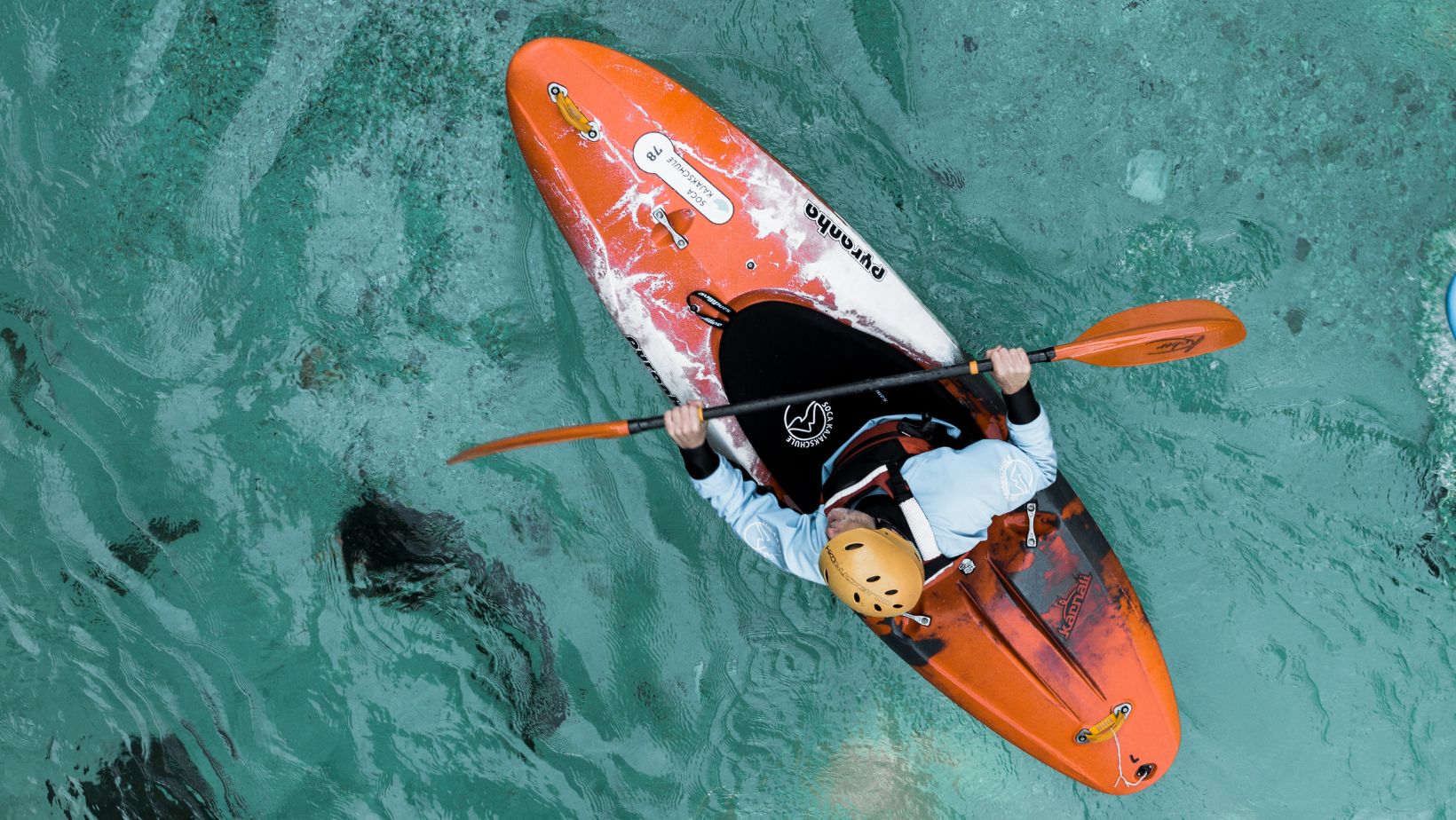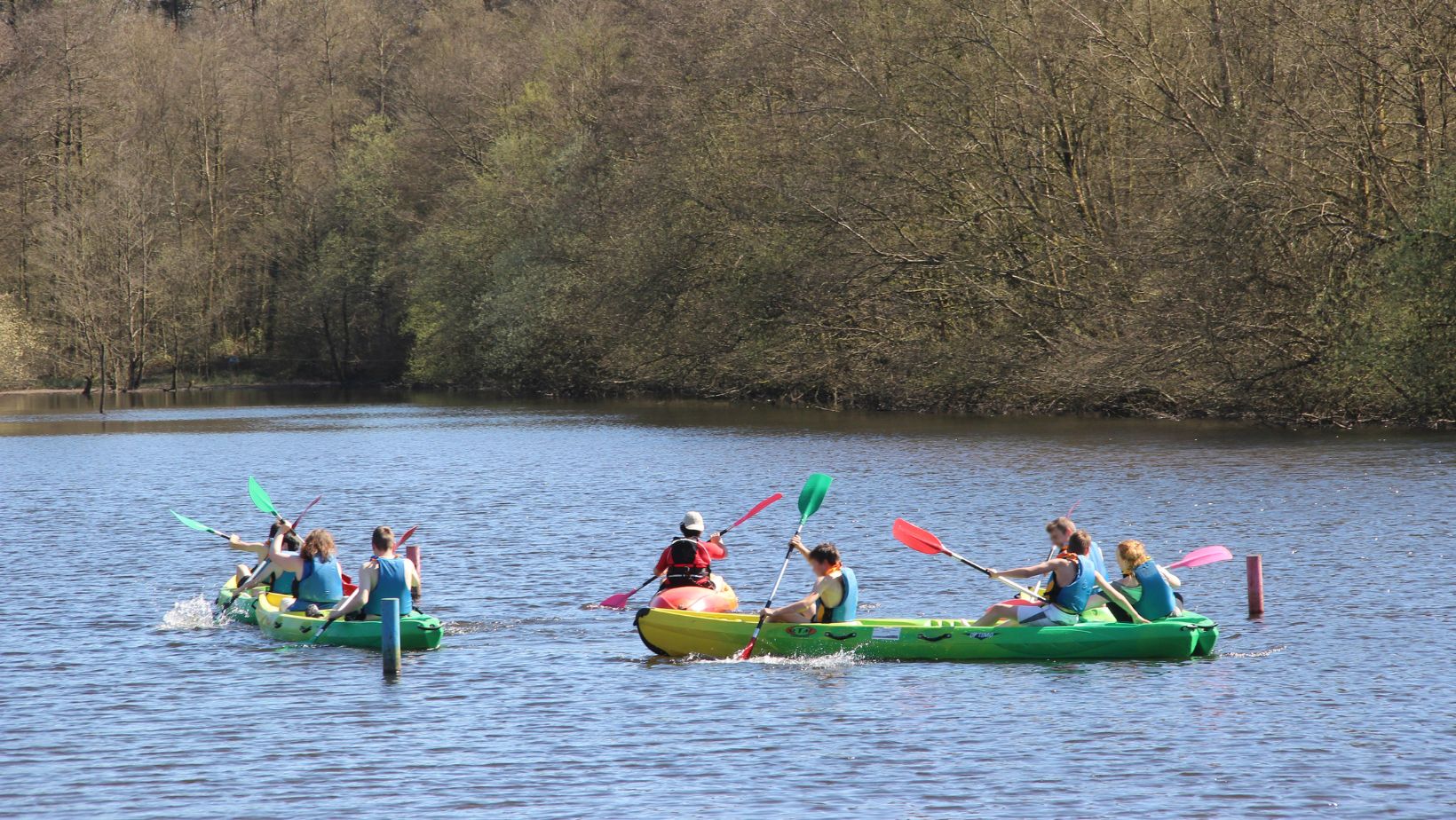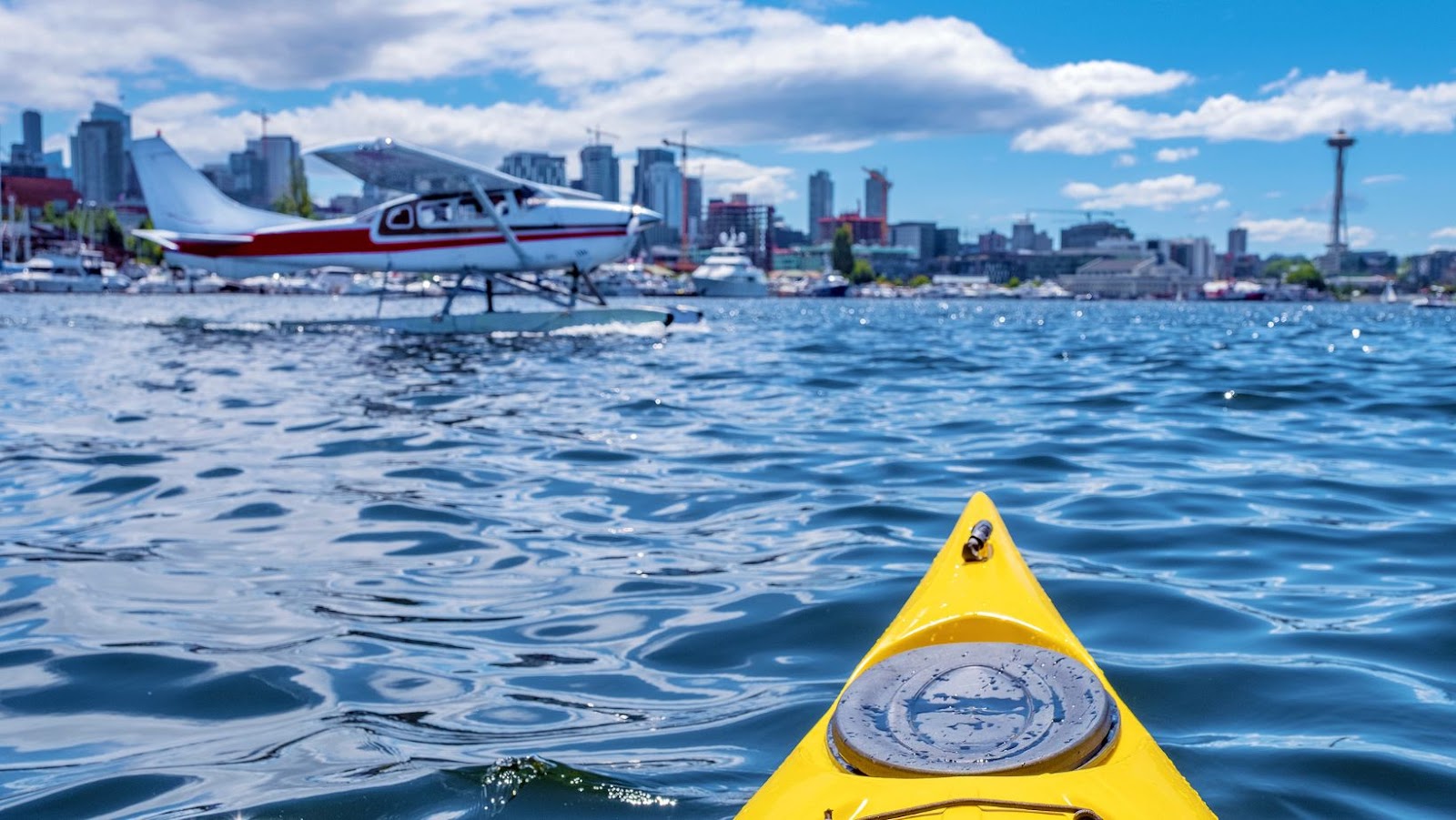Have you ever wondered if kayaking is a sport? From the thrill of navigating through obstacles to the comforting sensation of the open water, kayaking can provide a unique experience. Whether you’re looking for an adrenaline-filled activity or something more calming, this article can help you decide if paddling is right for you.
So grab your paddle and join us to find out if kayaking is a sport!
What is Kayaking?
Kayaking is a water-based sport and recreational activity in which participants use a kayak to propel themselves through the water. It originated from hunting activities in Inuit, Greenland, and Alaskan cultures, but has now evolved into a popular sporting activity around the world. Kayaking can provide hours of enjoyment for both beginners and advanced paddlers alike.
Kayaks come in various shapes with some designed for whitewater river runs, touring on lakes or coastal waters, surfing on ocean waves, overnight camping trips or fishing equipment storage. Kayaks can be propelled with one or more paddles; these are usually double-bladed in order to provide symmetrical power for each stroke of the paddle. Kayakers must battle the current, winds, and varying weather conditions when traveling the open water. More experienced kayakers may even try their hand at some rapids!
With proper safety instruction, a life vest and helmet (depending on the terrain), kayaking can be an enjoyable experience all around!
History of Kayaking
The history of kayaking stretches back thousands of years, and the first evidence of its popularity was found in the art and artifacts of the Arctic cultures that lived near the shorelines. The ancient Inuit would put on traditional waterproof clothing made from animal hides and use long wooden boats to hunt, fish and explore their environment.
Kayaking has evolved in recent centuries to include paddles, frame designs, materials such as heavy-duty plastics, rubber or composites as well as specialized hulls designed for different types of rapid. It has become a very popular sport enjoyed by individuals of all ages all around the world.

Kayaking is seen by many countries around the world as an important part of their culture and heritage. In recent years competitive events have been held to showcase this sport on both an amateur and professional level. The most popular inclusion are sprints (flat water racing), slalom (obstacle course racing) and marathon races which include quickly maneuvered rapids or testing out endurance in open water events such as crossing oceans or negotiating coastal waters.
Types of Kayaking
Kayaking is an activity that can be enjoyed alone or in a group, and there are a number of different ways to approach the sport. Depending on your level of experience, skill, and preferences, you may choose from sea kayaking, whitewater kayaking, surf kayaking, playboating/freestyle kayaking, racing/slalom kayaking and fishing kayakng.
Sea Kayaking: Sea kayakers typically paddle on calmer waters such as open ocean bays or the Great Lakes. Sea kayaks are designed to provide stability while cutting through waves and navigating larger expanses of water. They typically have room to store items like camping gear and food for extended trips.
Whitewater Kayaking: Whitewater sports involve navigating rapids or rivers with strong currents by maneuvering through obstacles such as rocks and trees along the way. Whitewaterkayaks are much shorter than sea-kayaks for easy maneuvering in rapidly moving water and often come equipped with special features like drag plates for more rapid turns at high speeds.
Surf Kayaking: As its name suggests surf kayakers travel the waves of ocean surf with their specially designed boats built for stability in the surf zone. Surfkayakers use a maneuverable craft created from plastic that offer great control over their direction around swells in order to get into position for each wave ride.
Playboating/Freestyle Kayaking: Playboating features special streamlined boats made for performing tricks on flat surface of lakes or rivers free of obstacles such as trees or rocks Playboaters can practice fun tricks like spins jumps rolls cartwheels looping etc…Learning how to successfully perform these maneuvers that require balance strength flexibility coordination reflexes an keen assessment skills makes this type of paddling both challenging rewarding and — when done right — downright spectacular!
Racing/Slalom Kayiring: Slalom paddlers compete against each other while navigating specific narrow channels marked by buoy gates similar to slalom skiing. Thebuoys should be navigated entirely in order (i.e. left gate first, right gate second). The craft used in slalolm is long, slender paddler “in” [K1] boats which allows for greater speed allowing it possible to navigate around gates more quickly. Slolom course competition uses a standardized set of twenty five gates which navigated correctly demonstrates technical navigational skilsl as well as physical ability no matter what typeof boat you choose (including sit inside recreational versions). It requires balanced timing, accurate steering, techinal agility, endurance, focus, concentration, responsivenes, reflexes, strenths, speed, flexibility, stamnia, stamina, reactitness, anticipation, spatial accuracy, quick thinking, meticolous lineup, focus, motivation, passion, dedication, discipline, determination – it’s tiring just thinking about it isn’t it?
Fishing Kayak: This type fo boat offeres anglers greater accessabiloty shoreline casts, wider pond access possibilities, long distancecasting capacity, current resistance, easy mobility, easy storage options, and affordability. Unlike other types, the fishing verision has been adapted o offer dry storage compartments, rod rudder holders, stearing pulties, cleats, recessed trays, ratchet straps, tiedwhich make them ideal fro fishing application, particularly where trolling is involved. These boats can be usedint he sea, showing promiseas multifunction option. Nexst time you go looking faranoffshore catch, consider packio g alonga somewaht diminutive ally instead.
Equipment Needed for Kayaking
To get started with kayaking, you need to invest in some basic items, such as a kayak and appropriate safety equipment. Paddles and life jackets are typically included when a kayak is purchased and are critical for the safety of all who are kayaking. Personal flotation devices (PFDs) should be worn at all times when out on the water.
If you plan to do whitewater kayaking, you may need additional equipment like helmets, wetsuits, spray skirts and skateboard-style shoes to ensure your safety. While many are tempted by used or off-brand equipment only purchase reliable items from an experienced shop as it could save your life one day.
Other important items to bring along include a map of the area that you’re in, plenty of drinking water, sunglasses or goggles with UV protection, sunblock and extra food supplies. Depending on the kind of environment that you’ll be paddling in — salt or fresh water — you may also want tools for removal of aquatic plants or other debris from your boat as well as fish finders if fishing is part of your activity.
Is Kayaking a Sport
Kayaking is recognized by the International Olympic Committee (IOC) as a sport and is a mainstay of the Summer Olympic Games, with canoe slalom racers competing in the kayak-specific races over whitewater rapids and in flatwater sprint events. Additionally, there are several disciplines of kayaking which are regulated by organizations like the International Canoe Federation (ICF) and The British Canoe Union (BCU).
The most popular forms of recreational kayaking include whitewater kayaking, touring/sea kayaking, surf/wave kayaking, playboating/freestyle kayaking, fishing/recreational angling, surfski paddling, sea touring and ocean racing. Each discipline has its own style of equipment – so depending on what form of kayaking you choose to do this may influence what type of kayak you will most likely use.
Depending on how invested you become in Kayaking as a sport can determine how seriously it’s taken by others. You may just be content to paddle around your local lake on weekends or pursue more advanced athleticism – either way it’s an enjoyable pastime that can certainly be enjoyed as a sport!
Kayaking Rules and Regulations
Kayaking is a sport where participants propel themselves across the water in a small boat driven by a double-ended paddles. It is both recreational and competitive in nature, and can be enjoyed by people of all ages and skill levels. In order to ensure safety and fair competition, there are several sets of rules and regulations governing kayaking events.
At the recreational level, there are general guidelines that must be followed to properly use a kayak. These include using proper clothing and equipment such as helmets and life vests, positioning oneself correctly in the kayak for maximum stability and efficiency, launching safely from shore or dock, following any boating regulations in effect for the area where the activity will take place, familiarizing oneself with local hazards such as high winds or strong currents that may affect kayaking performance, informing someone onshore of your intended plans before launching your kayak, only paddling within your physical abilities, and taking regular rests when necessary to alleviate fatigue.
At the competitive level, most organizations that host or sanction events have published their own set of rules which must be observed at all times during competition. Participation requirements may also vary from organization to organization; some organizations may allow boats with pedals in addition to traditional paddle-driven boats while others may only permit boats with double-bladed paddles. There can also be rules about what acceptable types of clothing competitors may wear during an event; swimwear is normally discouraged due to its adverse effects on performance in cold water temperatures. Competitors must also abide by international sportsmanship rules including fair play between competitors, respecting one another’s space on the waters, refraining from intimidating tactics against opponents both before and during an event, understanding others’ limitations when it comes to challenging course obstacles or tight turns on courses or tracks set out during an event etcetera.
Popular Kayaking Destinations
Kayaking has become an increasingly popular recreational and competitive sport enjoyed around the world. With so many destinations to explore and experience, kayakers can choose from a variety of breathtaking places for their next exciting adventure.
Europe is a highly desired kayaking destination due to its vast array of options with picturesque river trails extending through the continent. In Spain, travelers may be drawn to the riverside resorts of Catalonia, where stunning views make it the perfect destination for on-the-water fun like swimming, surfing, and fishing. While in Italy’s stunning Aosta Valley, kayakers can explore winding rivers nestled between majestic glaciers which provide breathtaking mountain backdrop views. Croatia is also known for its spectacular river trails that roll out along peaceful countrysides before spilling into the Ombla riverbed outside Dubrovnik.
In North America, Canada is touted as one of the top destinations for adventurous kayakers seeking unique experiences on flat water or white water rapids. Many venture to British Columbia’s Yoho National Park where they find pristine wilderness teeming with wildlife while paddling along crystal clear lakes and bouncing over exhilarating rapids. Closer to the continental U.S., Alaska offers some of North America’s most impressive watersheds including Sitka and Yakutat Bay where coastal adventures await with orcas swimming off close by shorelines leaving opportunities for unobstructed wildlife sightings from sea kayaks in calm waters unlike any other place in North America.

In addition to exploring these amazing places there are plenty more renowned locales around the world such as South Africa, New Zealand, Thailand, Mexico and beyond that offer exciting kaleidoscope landscapes consisting of year-round mild temperatures; pristine waters; remote coastlines; sandy beaches; dense rainforests rooted by mangrove swamps; turbulent whitewater streams and more that are perfect for voyaging by canoe or sea kayak!




No Comment! Be the first one.